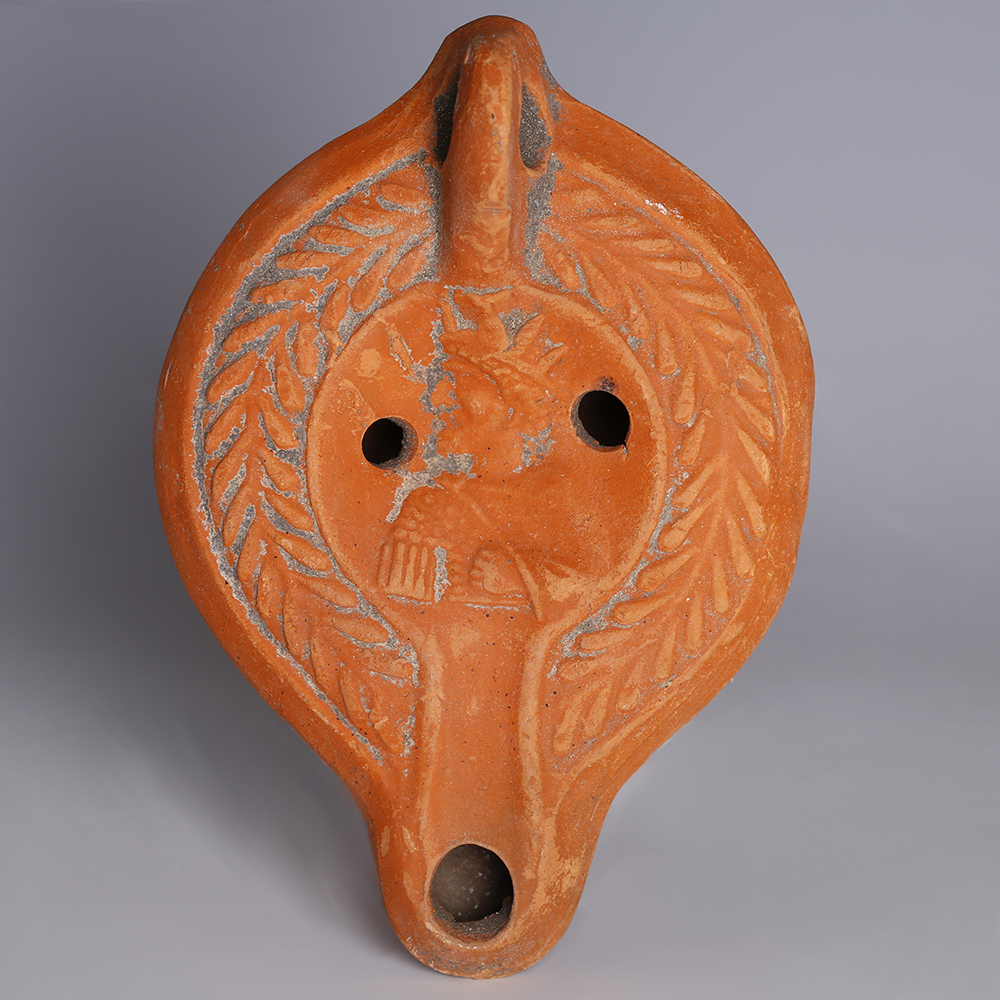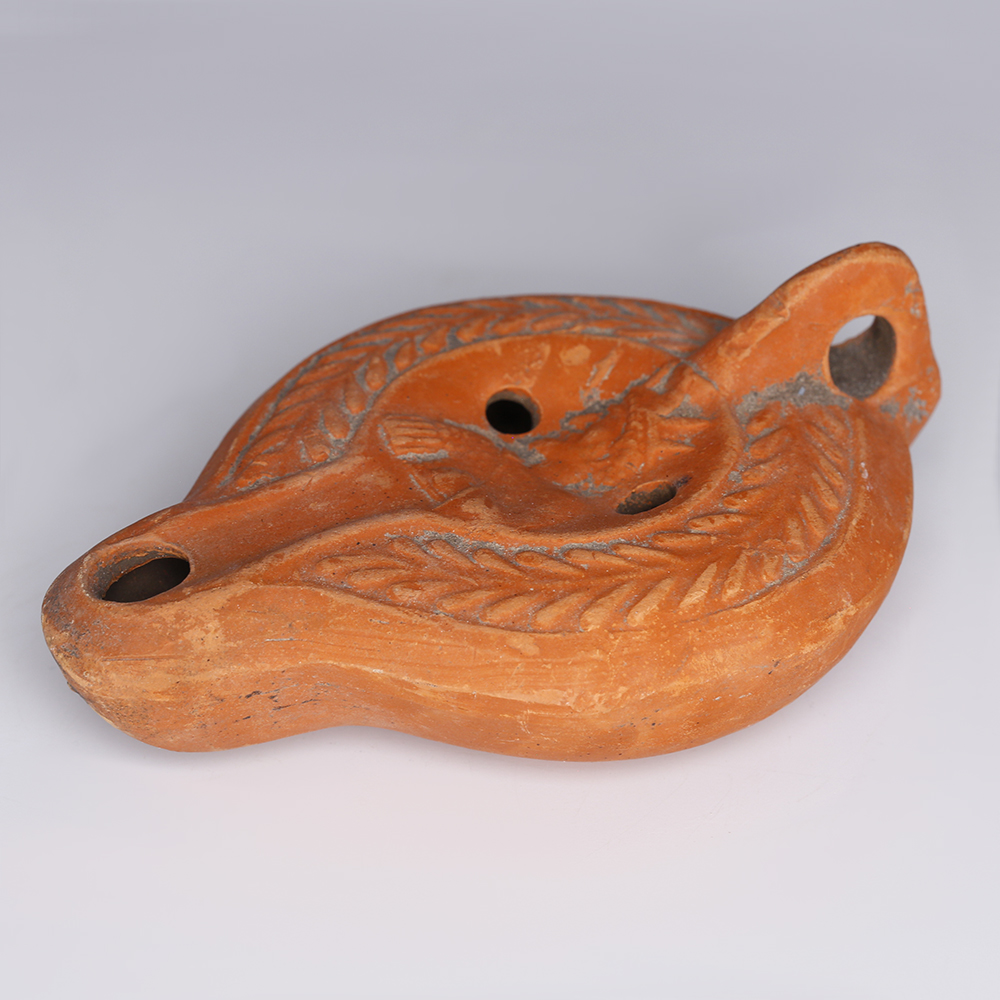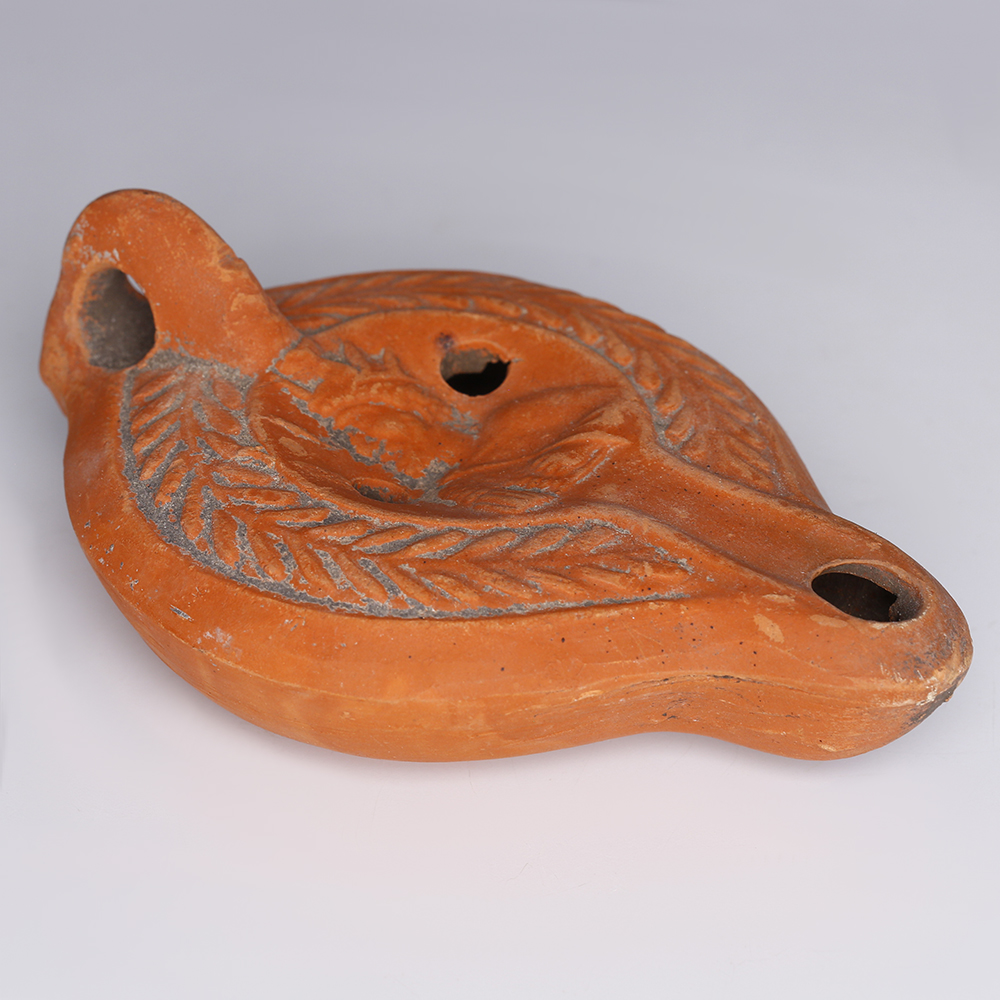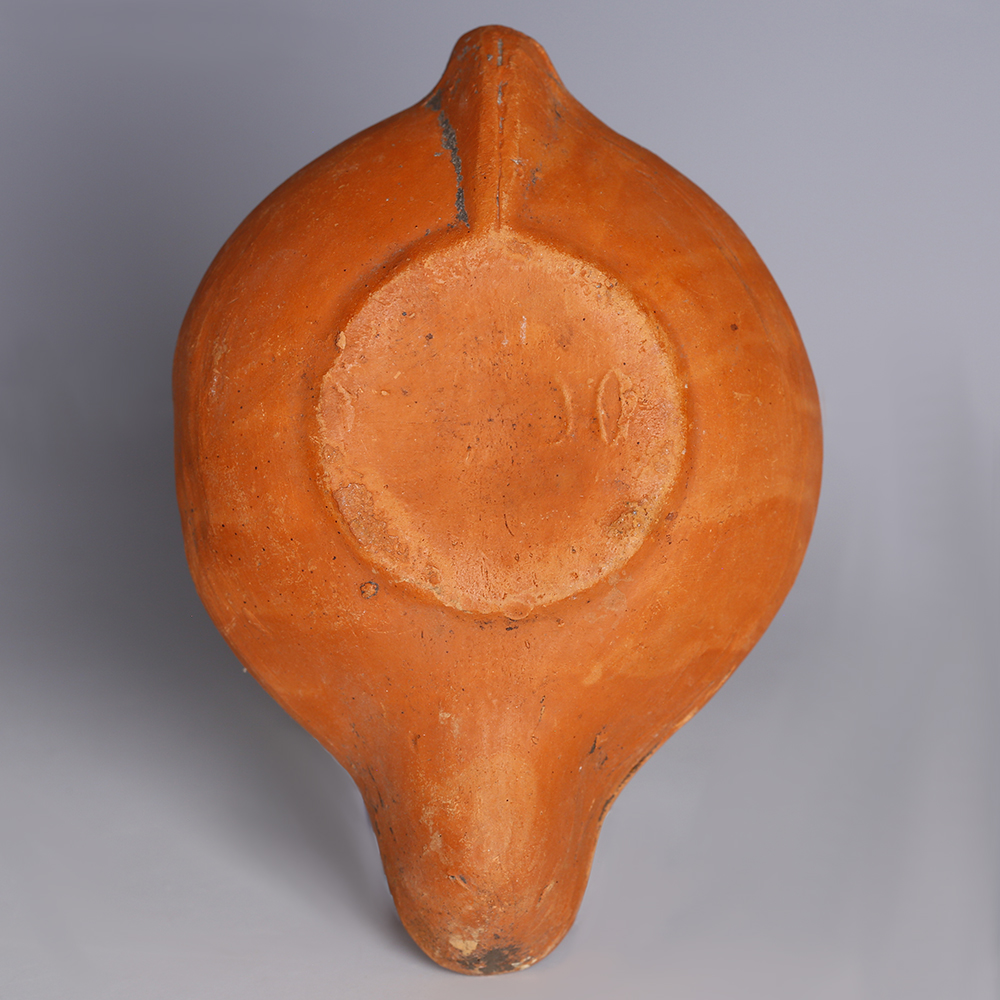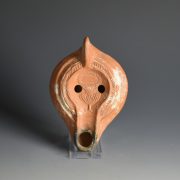Across the Roman Empire, a lamp was originally called a ‘lychnus’, from the Greek ‘λυχνος’, with the oldest Roman lamps dating back to the third century BC. During the Roman Empire, it became commonplace to use lamps in funeral ceremonies and for public purposes. Over time, the manufacture of lamps increased, and so did the variation in decoration, which depended mainly on the shape and size of the lamp. Common decorative themes depicted on the discus were entertainment scenes (such as gladiators in combat), common myths, and animals.
In Ancient Roman mythology and culture Sol Invictus, which literally means ‘unconquered sun’, was the official sun god of the later Roman Empire and a patron of soldiers. It is debated whether the cult of Sol Invictus was a continuation of the old Roman god Sol, with Invictus used as an epithet, or was a new cult adopted from the 3rd century AD. Various Emperors, including Aurelian and Constantine, used the image of Sol Invictus on their coinage and other state memorabilia and was recognised as a companion to the Emperor.
This particular type of lamp is characterised by the foliage design and convex shoulders. It originated in Tunisia, North Africa and can be dated to the 4th and 5th century AD. Lamps that feature a pierced handle, such as this example, can be dated further; to the second half or the end of the fourth century AD. Lamps with a solid handle, tend to be later and date to the first quarter of the 5th century AD.
